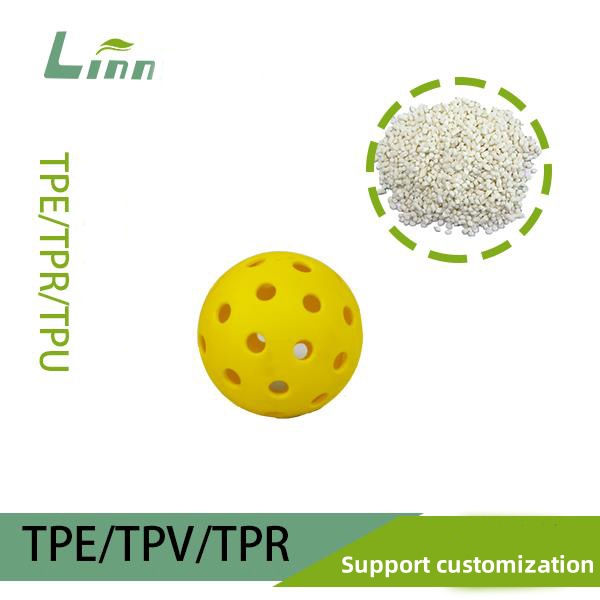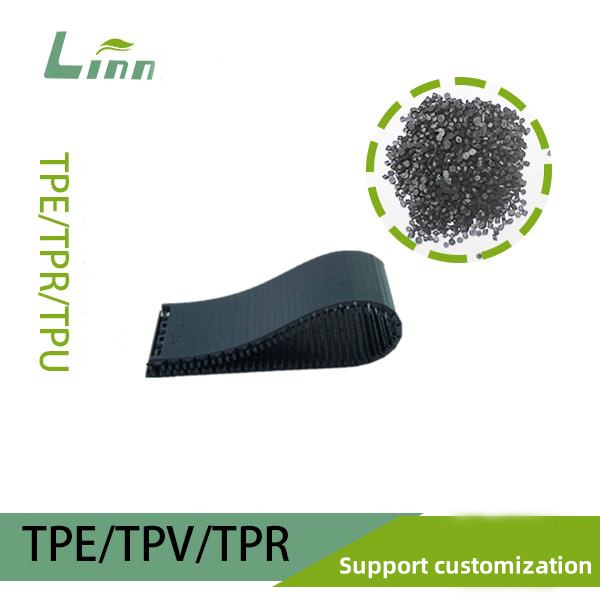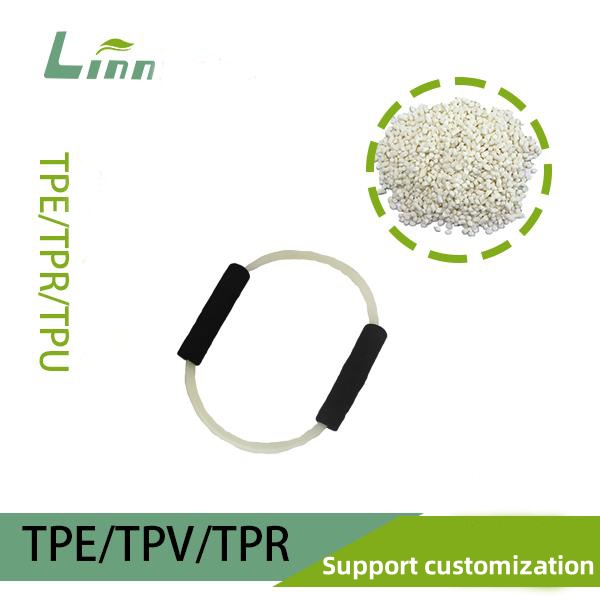I’ve been in the injection molding game for over a decade, and if there’s one thing I’ve learned, it’s that TPE (thermoplastic elastomer) can be both a dream and a nightmare to work with. Its flexibility and soft-touch feel make it a go-to for products like grips, seals, and consumer goods, but when mottling—those pesky, uneven color patches or streaks—shows up on the surface, it can turn a promising project into a headache. I still remember the sinking feeling during a TPE phone case run when the client spotted mottled surfaces and threatened to reject the batch. It was a scramble, but through trial and error, I figured out what causes mottling and how to fix it. In this article, I’m sharing everything I’ve learned about tackling mottling in TPE molding, from pinpointing the causes to implementing practical solutions and preventing it in the future. Whether you’re a manufacturer or a curious DIYer, let’s get those TPE parts looking flawless.

What Is Mottling in TPE Molding?
Mottling refers to uneven color distribution or patchy discoloration on the surface of molded TPE parts, often appearing as streaks, swirls, or blotches. Unlike uniform color defects, mottling is irregular and can ruin the aesthetic appeal of products, especially those requiring a consistent finish, like medical devices or consumer electronics. It’s particularly frustrating because TPE’s soft, rubbery texture makes surface imperfections stand out.
When I first dealt with mottling, I mistook it for a simple colorant issue, but I quickly learned it’s often a complex interplay of material, process, mold, and environmental factors. Understanding these root causes is the first step to solving the problem, so let’s dive into why mottling happens.
Why Does Mottling Occur in TPE Molding?
Mottling in TPE molding can stem from multiple sources, and it’s rarely just one thing going wrong. Drawing from my experience and industry resources like ASM International’s polymer processing guidelines, here are the primary culprits:
Inconsistent Colorant Dispersion: Poor mixing of colorants or masterbatches in the TPE melt leads to uneven color distribution.
Material Incompatibility: Some TPE grades don’t play well with certain colorants or additives, causing phase separation or streaking.
Improper Processing Parameters: Incorrect injection speeds, temperatures, or pressures can disrupt melt flow, resulting in mottling.
Mold Surface Issues: Rough or contaminated mold surfaces can interfere with melt flow, creating uneven patterns.
Material Contamination: Foreign particles or moisture in the TPE can cause surface irregularities that mimic mottling.
Shear-Induced Flow Marks: High shear rates during injection can cause colorants to segregate, leading to streaks.
Environmental Factors: Inconsistent drying or storage conditions can introduce moisture or degradation, affecting color uniformity.
In that phone case project, the mottling was caused by a combination of poor colorant mixing and excessive injection speed. It took a deep dive into the production process to sort it out, but the lessons stuck. Let’s explore how to address each cause with practical, hands-on solutions.

How to Fix Mottling in TPE Molding?
Eliminating mottling requires a systematic approach, tackling material, process, mold, and environmental factors. Below, I’ll walk you through solutions that have worked in my projects, along with tips to prevent mottling from rearing its ugly head again. These methods align with standards like ISO 17855 for plastics processing.
1. Ensure Proper Colorant Dispersion
Poor colorant mixing is a common cause of mottling, especially when using masterbatches. I’ve seen this firsthand when a TPE grip project showed streaks because the masterbatch wasn’t fully dispersed.
Solutions:
Use High-Shear Mixing: Equip the injection molding machine with a screw designed for high-shear mixing to ensure colorants blend evenly with the TPE melt.
Pre-Mix Masterbatch: Blend the masterbatch with TPE pellets in a tumbler or high-speed mixer before feeding them into the hopper.
Choose Compatible Colorants: Select colorants specifically formulated for TPE, as incompatible ones can clump or separate. Consult supplier data sheets, like those from DuPont’s TPE resources.
Increase Back Pressure: Raise back pressure to 50-100 bar during plastication to improve melt homogeneity.
Prevention Tip: Test colorant dispersion in small-scale trials before full production, and verify compatibility with the TPE grade.

2. Address Material Incompatibility
Not all TPEs and colorants are a match made in heaven. I once used a generic colorant that caused mottling because it didn’t bond well with the SEBS-based TPE we were using.
Solutions:
Select TPE-Specific Colorants: Work with suppliers to choose colorants designed for your TPE type (e.g., SEBS, TPU, or TPO).
Test Additives: If using additives like UV stabilizers or slip agents, ensure they don’t interfere with colorant dispersion. Run compatibility tests to confirm.
Switch TPE Grades: If mottling persists, consider a TPE grade with better color acceptance, such as one formulated for high-gloss or uniform finishes.
Consult Suppliers: Reach out to material suppliers for recommendations on colorant-TPE pairings tailored to your application.
Prevention Tip: Always request technical data and samples from suppliers to verify material compatibility before production.

3. Optimize Injection Molding Parameters
Mottling often ties back to how the TPE is processed. In my phone case project, tweaking the injection speed and barrel temperature was a game-changer for eliminating streaks.
Solutions:
Lower Injection Speed: Reduce injection speed to 20-40% of maximum to minimize shear stress, which can cause colorant segregation.
Adjust Barrel Temperature: Set barrel temperatures to 180-220°C, starting at the lower end to avoid overheating, which can degrade colorants.
Increase Mold Temperature: Raise mold temperature to 40-60°C to improve melt flow and reduce surface stress marks.
Fine-Tune Holding Pressure: Use a holding pressure of 50-70% of injection pressure for 1-3 seconds to ensure uniform packing and minimize flow marks.
Extend Cooling Time: Allow 15-30 seconds of cooling to stabilize the part before ejection, reducing surface irregularities.
Prevention Tip: Document optimal parameters for each TPE grade and colorant combination to streamline future runs.

4. Improve Mold Design and Maintenance
The mold’s surface and design can make or break the TPE’s appearance. I’ve seen mottling caused by contaminated molds that disrupted melt flow, creating uneven patterns.
Solutions:
Polish Mold Surfaces: Ensure the mold cavity is polished to an SPI A2 or A3 finish for glossy parts, or textured for matte finishes, to promote smooth melt flow.
Clean Molds Regularly: Remove residues or contaminants from the mold after every 5,000-10,000 cycles using non-abrasive cleaners.
Enhance Venting: Add vent channels (0.01-0.03mm deep) to prevent air traps that can mimic mottling.
Check Gate Design: Use a fan gate or sub-gate to ensure even melt distribution, reducing flow marks.
Prevention Tip: Schedule routine mold inspections and maintenance to catch surface issues before they affect production.
5. Eliminate Material Contamination
Contamination, like moisture or foreign particles, can cause mottling-like defects. I once traced mottling to a batch of TPE pellets that had absorbed moisture, a problem we fixed with proper drying.
Solutions:
Dry TPE Thoroughly: Dry pellets at 80-100°C for 2-4 hours using a dehumidifying dryer to ensure moisture content is below 0.1%.
Clean Equipment: Purge the injection molding machine’s barrel and screw before switching TPE grades to remove residual materials.
Filter Contaminants: Install a melt filter in the machine to catch foreign particles that could disrupt color uniformity.
Store Properly: Keep TPE pellets in sealed, moisture-proof bags in a dry environment (relative humidity below 50%).
Prevention Tip: Implement strict material handling protocols to avoid contamination from the warehouse to the molding machine.

6. Mitigate Shear-Induced Flow Marks
High shear rates can cause colorants to separate, leading to mottling. I’ve found that adjusting the screw speed and injection profile can smooth things out.
Solutions:
Reduce Screw Speed: Lower screw speed to 50-100 rpm to minimize shear during plastication.
Use Multi-Stage Injection: Apply a three-stage injection profile (e.g., 20%, 50%, 80% speed) to control melt flow and reduce shear stress.
Optimize Runner System: Design runners with gradual curves and larger diameters to reduce shear at the gate.
Prevention Tip: Simulate the molding process using software like Moldflow to identify high-shear areas and adjust accordingly.
7. Control Environmental Factors
Environmental factors, like inconsistent drying or storage, can indirectly cause mottling by affecting material quality. I learned this when a batch of TPE stored in a humid warehouse led to mottled parts.
Solutions:
Maintain Consistent Drying: Use a dehumidifying dryer with stable temperature control to prevent moisture reabsorption.
Control Storage Conditions: Store TPE in a climate-controlled warehouse with humidity below 50% and temperature 15-25°C.
Monitor Material Age: Use TPE pellets within 6-12 months of manufacture to avoid degradation that could affect color uniformity.
Prevention Tip: Install hygrometers and temperature loggers in storage areas to track conditions and ensure material integrity.

Comparison Table of Mottling Causes and Solutions
To make it easier to tackle mottling, I’ve put together a table summarizing the causes, solutions, and prevention strategies based on my experience.
Cause | Why It Happens | Solutions | Prevention Strategies |
|---|---|---|---|
Inconsistent Colorant Dispersion | Poor mixing of colorants or masterbatches | Use high-shear screw, pre-mix masterbatch, increase back pressure | Test dispersion in trials, verify colorant compatibility |
Material Incompatibility | Colorants or additives don’t bond well with TPE | Select TPE-specific colorants, test additives, switch TPE grades | Confirm material compatibility with suppliers |
Improper Processing Parameters | High shear, incorrect temperatures, or pressures disrupt melt flow | Lower injection speed, adjust barrel (180-220°C) and mold (40-60°C) temperatures, fine-tune holding | Document optimal parameters for each TPE grade |
Mold Surface Issues | Rough or contaminated mold surfaces interfere with melt flow | Polish mold to SPI A2/A3, clean regularly, enhance venting | Schedule routine mold maintenance, inspect for wear |
Material Contamination | Moisture or foreign particles disrupt color uniformity | Dry TPE thoroughly, clean equipment, use melt filters | Store in sealed bags, implement strict handling protocols |
Shear-Induced Flow Marks | High shear rates cause colorant segregation | Reduce screw speed, use multi-stage injection, optimize runner system | Simulate molding to identify shear areas, adjust design |
Environmental Factors | Inconsistent drying or storage affects material quality | Maintain consistent drying, control storage humidity (<50%), monitor material age | Use hygrometers, store in climate-controlled conditions |
My Real-World Experience
Let me take you back to that TPE phone case project that tested my patience. We were producing thousands of soft-touch cases for a tech company, and everything seemed fine until quality control flagged mottled surfaces—patchy streaks that looked awful under bright light. The client was ready to pull the plug, and I was sweating bullets. After a frantic investigation, we narrowed it down to two issues:
Poor Colorant Dispersion: The masterbatch wasn’t mixing well with the TPE, causing streaks. We switched to a high-shear screw and increased back pressure to 80 bar, which smoothed out the color.
Excessive Injection Speed: The machine was set too fast, creating shear-induced flow marks. We dialed the injection speed back to 30% and adjusted the mold temperature to 50°C, eliminating the mottling.
These fixes saved the batch, and the client was impressed with the turnaround. The experience taught me to approach mottling like a puzzle, checking every piece—material, process, and mold—until it fits together perfectly.

Frequently Asked Questions
To wrap things up, I’ve compiled some common questions about mottling in TPE molding, based on issues I’ve tackled or heard from peers.
Q1: How can I tell if mottling is due to colorant issues or processing?
A: Colorant-related mottling shows irregular streaks or patches tied to poor mixing, often consistent across parts. Processing issues, like shear marks, appear as flow lines near gates or seams. Run trials with different speeds and check dispersion under a microscope to confirm.
Q2: Can mottling affect TPE’s performance, or is it just cosmetic?
A: Mottling is primarily cosmetic, but if caused by contamination or degradation, it could signal reduced mechanical properties. Test tensile strength and elongation to ensure performance isn’t compromised.
Q3: Are some TPE grades more prone to mottling?
A: Yes, low-viscosity or high-filler TPEs can be trickier to color uniformly, increasing mottling risk. SEBS-based TPEs often handle colorants better than TPU-based ones. Check with suppliers for grade-specific advice.
Q4: What if mottling persists after adjusting parameters?
A: If tweaks don’t work, revisit material compatibility, mold surface quality, and contamination risks. Consider switching colorants or TPE grades, and consult suppliers for tailored solutions.
Q5: Can post-processing fix mottled TPE parts?
A: Post-processing, like painting or coating, can mask mottling, but it’s costly and may not be durable. Fixing the root cause during molding is more effective and economical.
Final Thoughts
Mottling in TPE molding can feel like a maddening mystery, but with a clear understanding of its causes and a methodical approach, you can banish those unsightly patches for good. By optimizing colorant dispersion, material selection, molding parameters, mold maintenance, and environmental controls, you’ll produce TPE parts that are as beautiful as they are functional. My years in the industry have shown me that every defect is a chance to learn, and solving mottling is no exception—it’s about persistence and precision.
If you’re battling mottling or have a TPE project that’s driving you nuts, I hope this guide lights the way. Feel free to reach out with questions or share your own experiences—I’d love to geek out over molding challenges with you. Here’s to creating TPE products that shine, inside and out!
